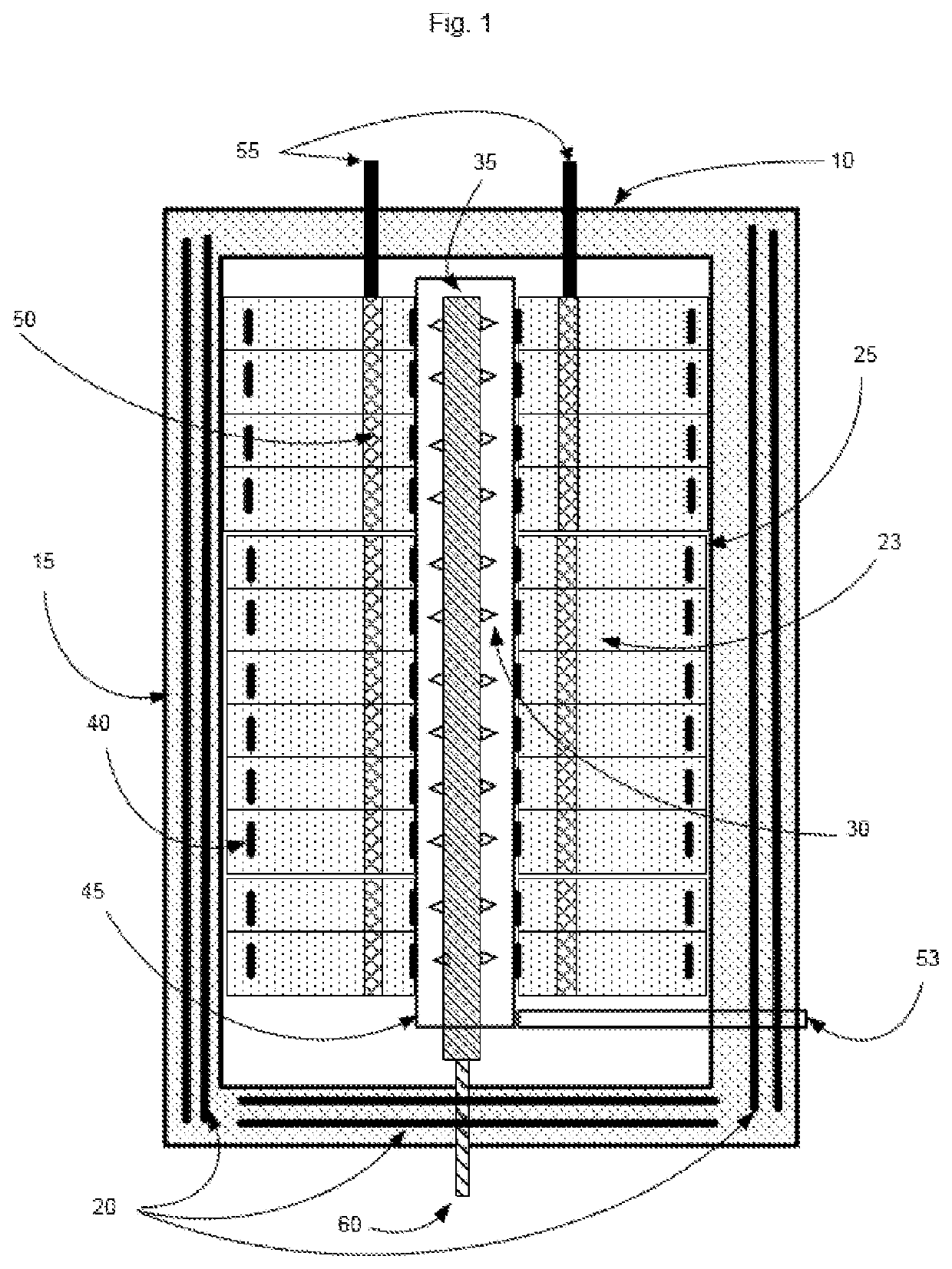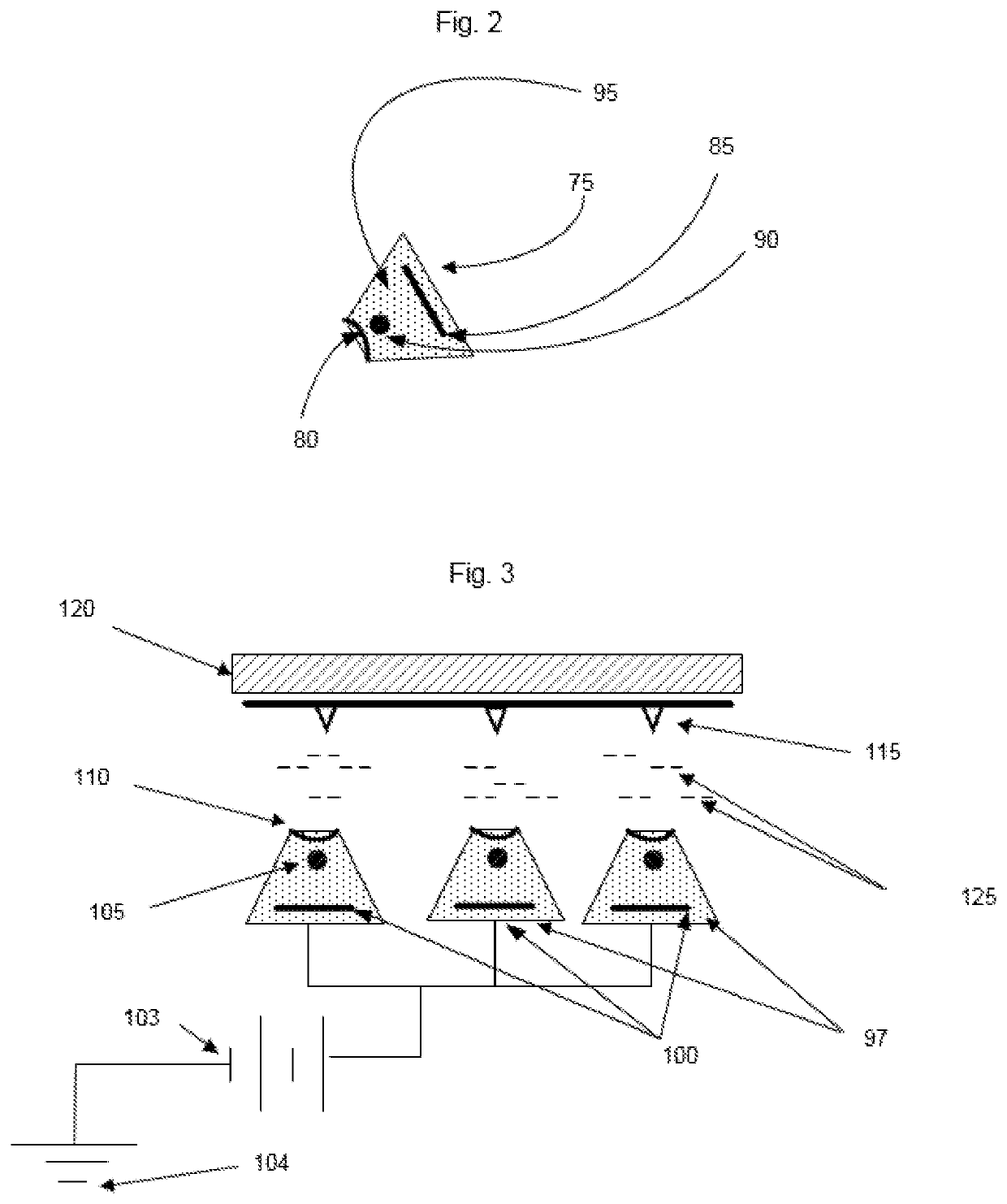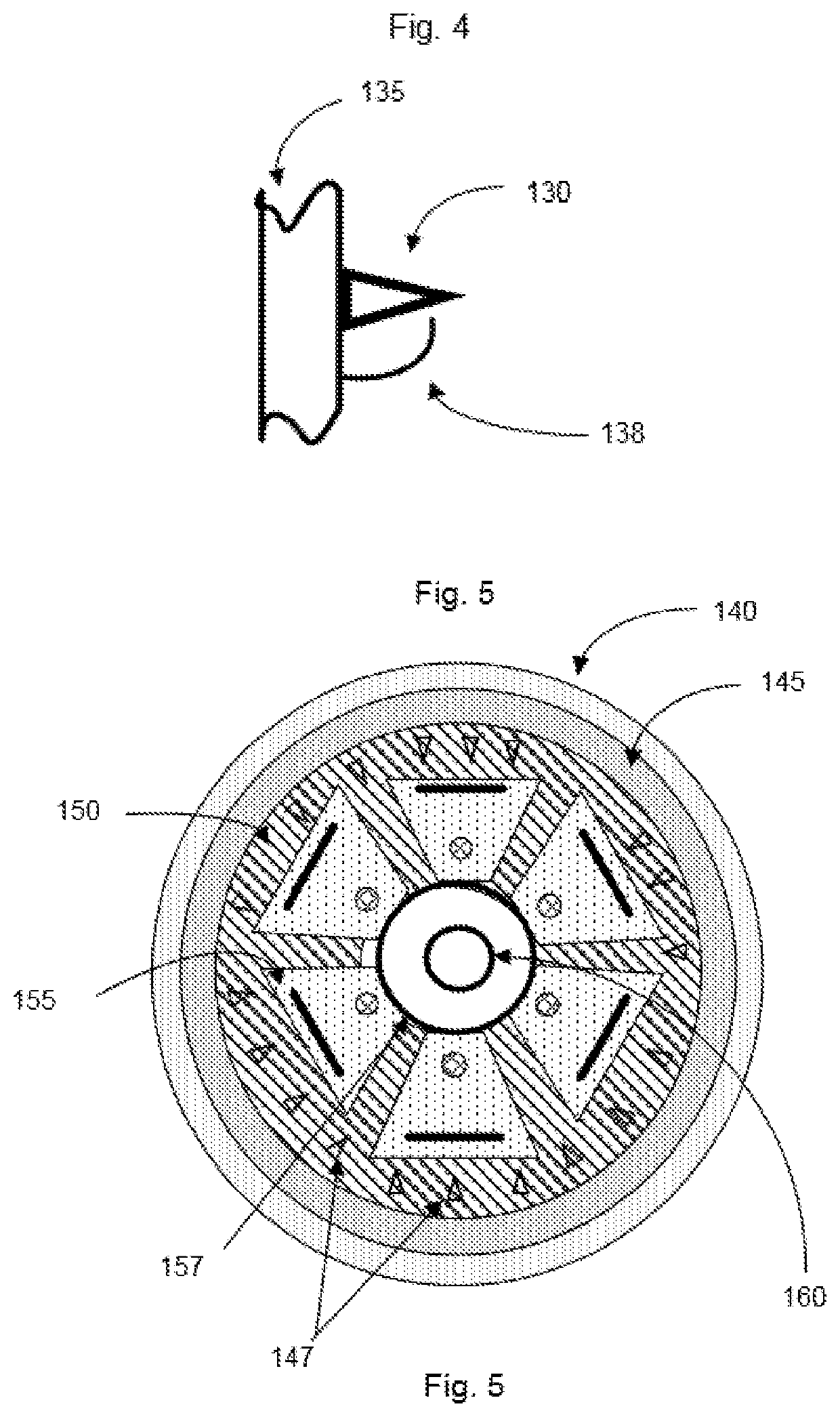Electret Energy Storage System
a technology of energy storage and electrochemical components, applied in the direction of variable capacitors, capacitors, electrical equipment, etc., can solve the problems of imposing significant constraints, unable to solve the problem of significant constraints, and the configuration of the dielectric material supporting ion flows between the conductive battery plates is not conducive to storing significant amounts of energy, etc., to increase the operational life of the constant voltage source, increase the high energy density level, and extend the operational life
- Summary
- Abstract
- Description
- Claims
- Application Information
AI Technical Summary
Benefits of technology
Problems solved by technology
Method used
Image
Examples
Embodiment Construction
—FIG. 1 THROUGH FIG. 10—PREFERRED EMBODIMENT
[0095]The preferred embodiment of the EESS invention performs as an energy storage device ranging from kilowatts to megawatts at increased energy densities per unit area. The EESS energy storage density per unit area footprint is significantly less than traditional energy storage technologies that have previously been reported within the energy storage art. Expected energy retention times range from days to months at low levels of energy leakage.
[0096]The energy storage reservoir (10) depicted in FIG. 1 completely encases all electret energy storage reservoir cells (23) that are encapsulated by the EESS paramagnetic material (15). During the charging period of each electret energy storage reservoir cell (23), a vacuum is maintained with the bremsstrahlung charge tube (45). The charge point cells (30), attached to the charge tube (35) fire energetic charged particles into the bremsstrahlung charge tube (45) connected to the front end of eac...
PUM
 Login to View More
Login to View More Abstract
Description
Claims
Application Information
 Login to View More
Login to View More - R&D
- Intellectual Property
- Life Sciences
- Materials
- Tech Scout
- Unparalleled Data Quality
- Higher Quality Content
- 60% Fewer Hallucinations
Browse by: Latest US Patents, China's latest patents, Technical Efficacy Thesaurus, Application Domain, Technology Topic, Popular Technical Reports.
© 2025 PatSnap. All rights reserved.Legal|Privacy policy|Modern Slavery Act Transparency Statement|Sitemap|About US| Contact US: help@patsnap.com



